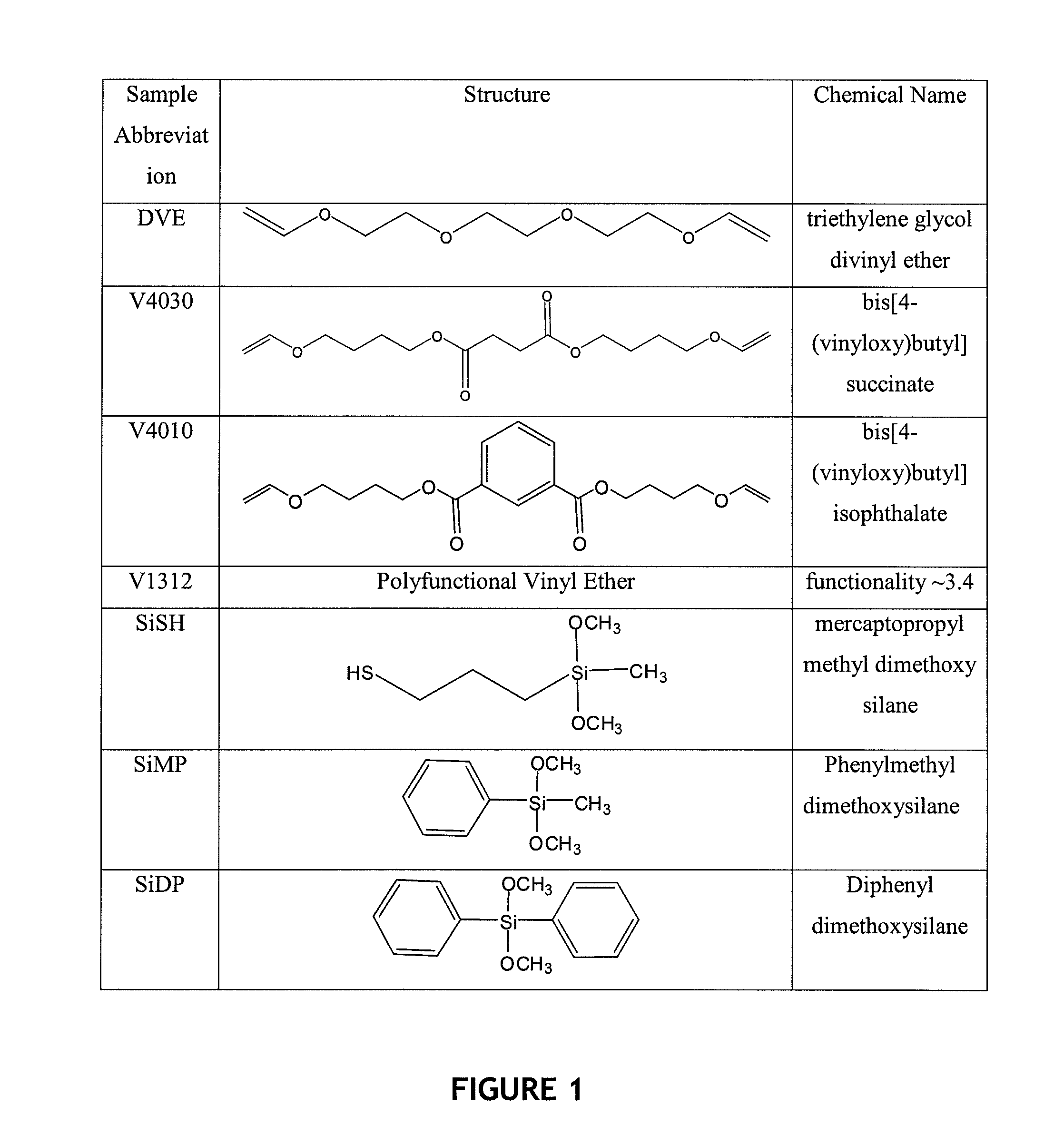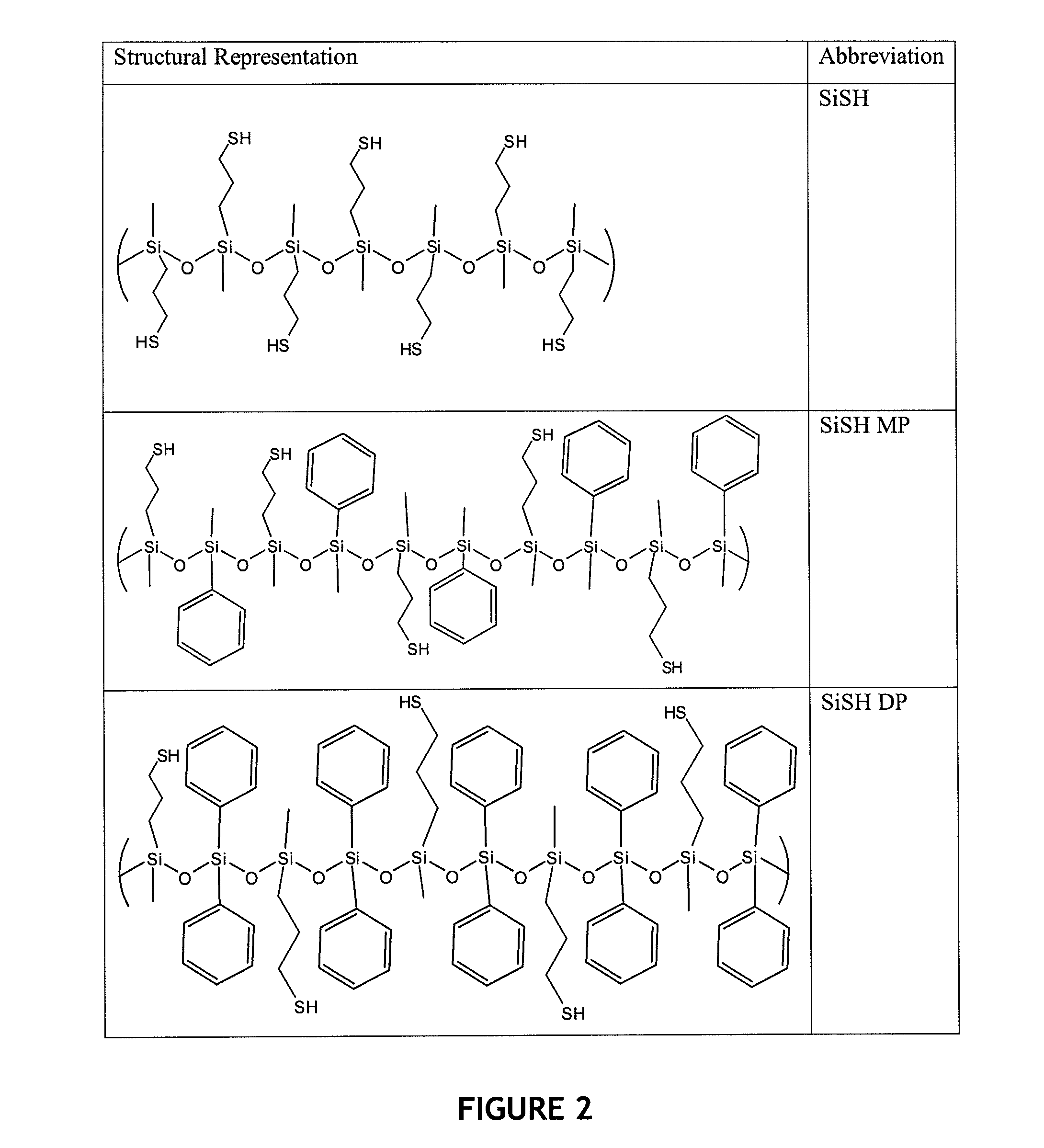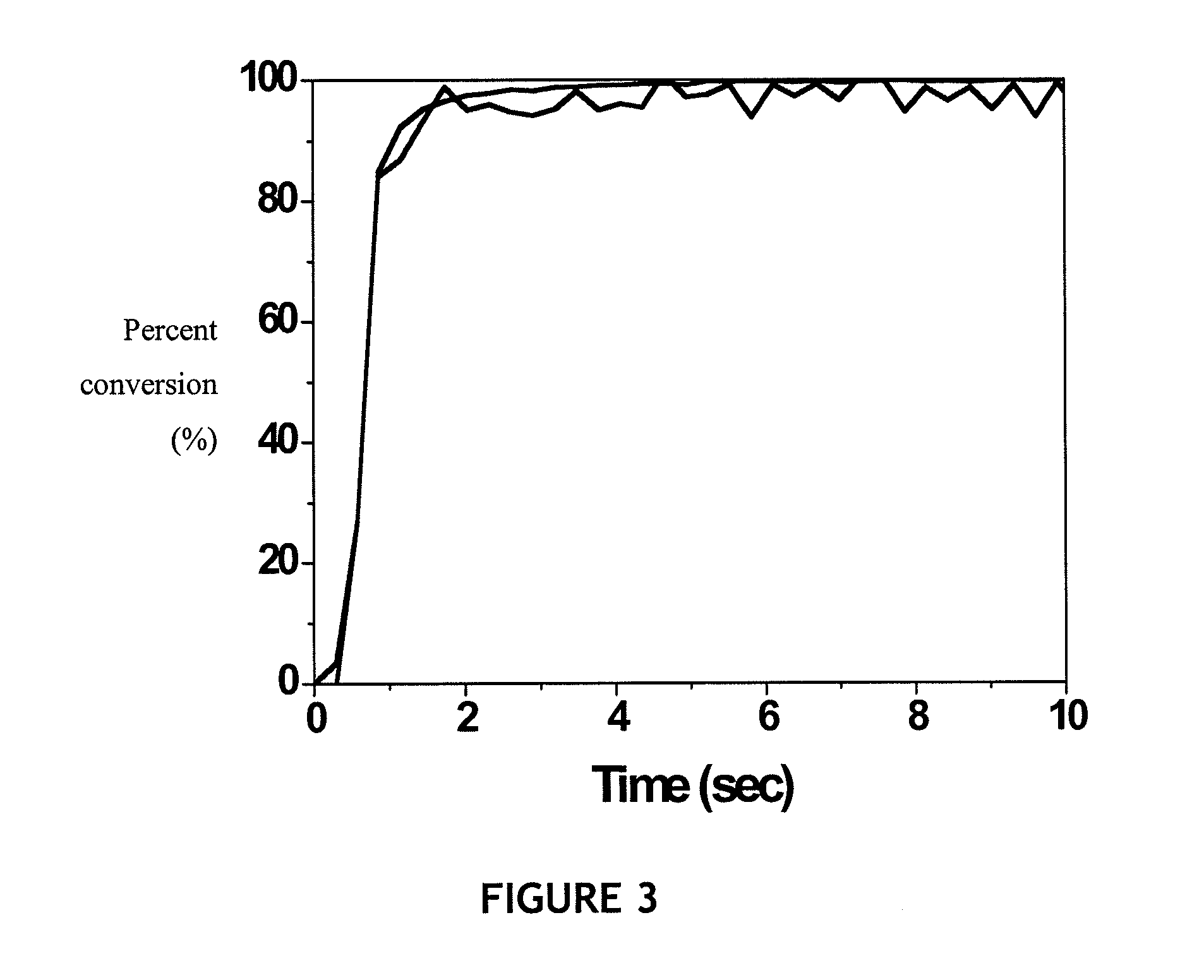Polymer impression materials
a technology of polymer and impression materials, applied in the field of polymer impression materials, can solve the problems of easy tearing of alginates, poor dimensional stability and contraction, and long set time (8-12 minutes), and achieve the effects of short setting time, good wettability, and long working tim
- Summary
- Abstract
- Description
- Claims
- Application Information
AI Technical Summary
Benefits of technology
Problems solved by technology
Method used
Image
Examples
example 1
Synthesis of Polysiloxane-Based Thiols
[0089]For the synthesis of polysiloxane-based thiols, mercaptopropyl methyldimethoxy silane (SiSH) (10 g) was mixed with an equivalent amount of acidified water (1 mol % of HCl). The mixture was stirred for 24 hours at room temperature. For copolymer synthesis, 1:1 molar mixtures of mercaptopropyl methyldimethoxy silane (SiSH) with either diphenyldimethoxysilane (SiDP) or phenylmethyldimethoxy silane (SiMP) were used. After the reaction, products were purified by evaporating methanol and water. FIG. 2 shows the chemical structures of the polysiloxane-based thiol monomers synthesized.
example 2
Preparation of Thiol-Polysiloxane-Vinyl Ethers Impression Materials
[0090]Polysiloxane-based thiol monomers and vinyl ether monomers and DMPA were added to a 20 mL scintillation vial and stirred magnetically. The relative weight % used for each oligomerization are given in Table 1; 0.2 wt % DMPA was used in each sample. The prepared thiol-ene oligomers were stored unpurified and away from light sources at ambient conditions. Samples were irradiated with an EFOS Ultracure with a 320-500 nm bandpass filter. Irradiation intensity was measured at the surface level with an International Light Inc. Model IL400A radiometer (Newbury, Mass.). Conversion of the thiol and vinyl functional groups was monitored using FTIR (Magna 750, Nicolet Instrument Corp., Madison Wis.). A goniometer was used to assess water contact angle from the time the drop was placed on the impression material. DMA was performed on each sample. Table 1 exhibits final conversion, water contact angle, glass transition tempe...
example 3
Cure Kinetics
[0091]The cure rates and final double bond conversion were measured using real-time FTIR spectroscopy. FTIR experiments were conducted in the mid-infrared range (4000-600 cm−1) using a Nicolet 750 Magna FTIR Spectrometer (Madison, Wis.) with a KBr beam splitter and an MCT / A detector. The infrared peak absorbance at 1619 and 1636 cm−1 was used for determining vinyl ether conversion; and the peak at 2572 cm−1 was used for the monitoring thiol group conversion. Conversions were calculated with the ratio of peak areas to the peak area prior to polymerization.
[0092]All thiol-ene mixtures were cured within 10 seconds, as shown in FIG. 3(a). The thiol-vinyl ether-methacrylate mixtures took up to 30 seconds to cure, upon UV irradiation, as shown in FIGS. 3 (b) and (c). Example of cure kinetics for V4030 / SiSH, V4030 / SiSH MP / methacrylate(dimer acid), and V4030 / SiSH DP / methacrylate(dimer acid) systems are given in FIGS. 3 (a), (b), and (c), respectively. In the embodiment shown, t...
PUM
| Property | Measurement | Unit |
|---|---|---|
| wavelength range | aaaaa | aaaaa |
| wt % | aaaaa | aaaaa |
| wt % | aaaaa | aaaaa |
Abstract
Description
Claims
Application Information
 Login to View More
Login to View More - R&D
- Intellectual Property
- Life Sciences
- Materials
- Tech Scout
- Unparalleled Data Quality
- Higher Quality Content
- 60% Fewer Hallucinations
Browse by: Latest US Patents, China's latest patents, Technical Efficacy Thesaurus, Application Domain, Technology Topic, Popular Technical Reports.
© 2025 PatSnap. All rights reserved.Legal|Privacy policy|Modern Slavery Act Transparency Statement|Sitemap|About US| Contact US: help@patsnap.com



